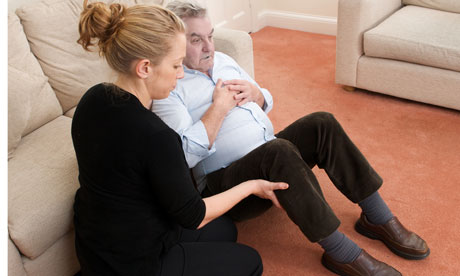
It must be great to know you've saved a life. A couple of years ago student Callum Brown was settling in at Exeter University when he came across a group on a night out. "I was going to walk past," he recalls, "when I heard someone say, 'Roll him on his back, then he will stop throwing up.'"
They'd clearly never heard of Jimi Hendrix, who drowned in his own vomit.
"Having done a first aid course at work," Brown continues, "I knew this was absolutely not the right thing to do, and I went over and put the guy in the recovery position. His friends were all drunk and would not have been able to help. Shortly afterwards he threw up on to the road, but since he was in the recovery position this was simply messy. Without my interference he would probably have choked on his vomit."
In an ideal world, everyone would have first aid training – and be sober enough to remember it. But according to St John Ambulance, up to 150,000 people die needlessly in Britain every year; from the 29,000 killed by heart attacks to the 2,500 victims of asphyxiation. That's why the charity has launched The Difference – a campaign to remind us how to cope in common situations. While you get round to educating yourself about recovery positions, CPR and so on, here are 10 widespread misconceptions that often stop us doing what we can.
Myth 1 The ambulance will be here in a minute.
Not if you've only just called it, it won't. In England, for example, the target response-time for life threatening emergencies is eight minutes, and that's only for 75% of all incidents – which is easily enough time for a casualty to become a corpse.
Myth 2 It's better to do nothing than risk making things worse.
"If someone is bleeding and you do nothing, they'll lose too much blood, go into shock and die," points out St John's Isobel Kearl. "If someone is unconscious and breathing, but not in the recovery position, they could choke on their tongue or vomit. Importantly, if someone is unconscious and not breathing and you do nothing, they will still be unconscious and not breathing."
Myth 3 If you have a nosebleed, you should tilt your head back.
It's news to 30% of us, according to St John, but this may cause blood to run into the throat and lead to nausea and vomiting. Instead, tilt your head forward, pinch your nostrils shut and breathe through your mouth. If you're still bleeding 30 minutes later, go to hospital.
Myth 4 Heart attack victims should lie down, rather than sit up.
One in 10 of us believes this is a good idea, but it can make it harder to breathe. A half-sitting position with their knees bent and head and shoulders supported is best.
Myth 5 If an arm or leg is bleeding heavily, you should tie a tight tourniquet above the injury.
Although 58% assume we should do this, it could stop all blood flow and cause tissue damage. Instead put pressure on the wound with a dressing, and raise it.
Myth 6 You must never, ever move someone after a traffic accident, even if they're not breathing.
It's all very well to worry about spinal injuries (as 43% of us would), but it's more important to make sure they're breathing. If they are unconcious check their airway is clear by tilting the head and lifting their chin.
Myth 7 If a child drinks bleach, make them vomit.
This can cause more damage as the vomit leaves the body. Call 999, and let them sip cold milk or water if they have burnt lips from corrosive substances.
Myth 8 If someone is choking on a foreign object, they'll appreciate a couple of fingers down the throat.
This could actually push the obstruction down further. Instead, smack them firmly between the shoulderblades. If that doesn't clear the blockage, you may have to try the Heimlich manoeuvre, also known as "abdominal thrusts". This can cause internal damage, however, and anyone who's been on the wrong end of it should be checked over afterwards. While we're at it, Joe Mulligan of the British Red Cross points out that it's not a good idea to suspend a choking child by their feet. "Not only can it be very traumatic," he says, "it could also result in head injury if the child is dropped."
Myth 9 If someone is having an epileptic seizure, put something in their mouth – a spoon, perhaps.
This is supposed to stop them biting their tongue – but, says Kearl, "they're likely to break their teeth, or the object itself – and then choke on the pieces. And you could get bitten while you're doing it." The best thing is to cushion the area with something such as a coat or blanket, and remove bystanders and hazards such as hot drinks. When the convulsions stop, check their breathing and place them in the recovery position.
Myth 10 If someone feels faint, put their head between their legs.
They may simply fall forwards. Instead, lie them down and raise their legs to increase blood flow to the brain. Make sure they have plenty of fresh air.
• For first aid advice or a free guide, go to sja.org.uk

